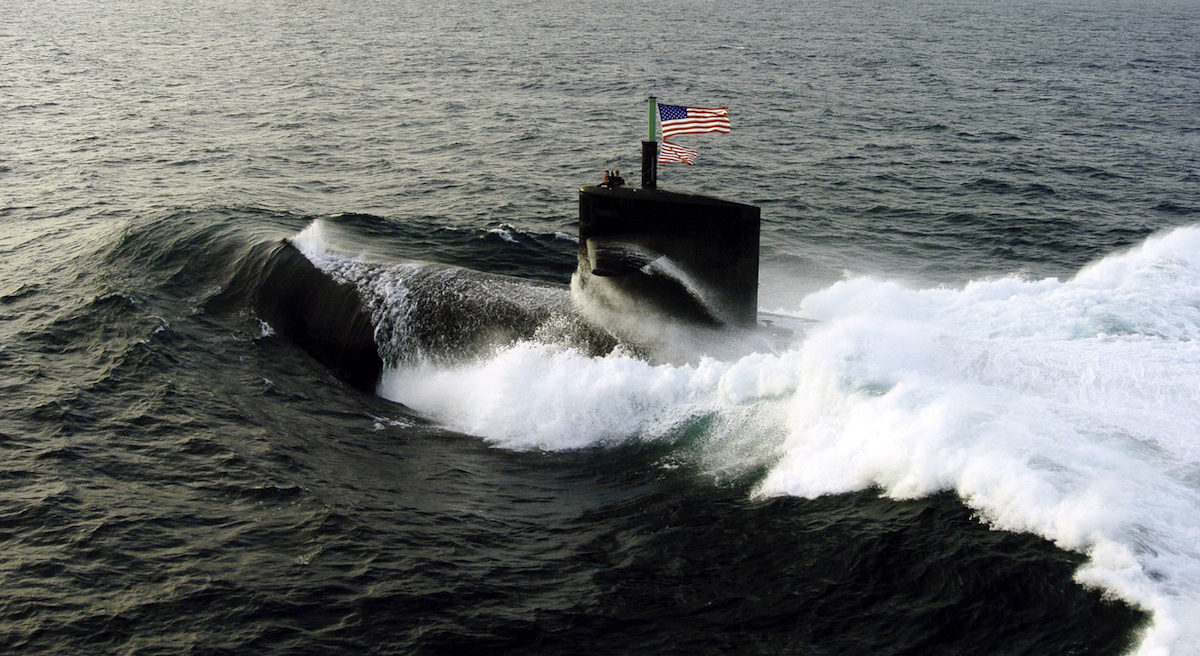Asbestos and Submarines
In the U.S. military, the Navy used asbestos in a variety of areas aboard its submarines and ships. In the cramped spaces of submarines, many sailors inhaled airborne asbestos particles. Consequently, Navy veterans have the highest rates of asbestos-caused cancers among military and civilian careers.

Navy’s Use of Asbestos on Submarines and Ships
Every branch of the U.S. military constructed buildings, vehicles, and aircraft with asbestos-contaminated products at some time. Yet, the Navy used the fireproofing mineral fiber far more than any other branch. Often, Navy ships and submarines contained tons of asbestos.
Over time, the lightweight material became a health risk as asbestos-containing materials frayed and became airborne. Cleaning and renovation work also increased sailors’ toxic exposure. In the tight spaces aboard submarines, toxic particles too small for the human eye to see can stay trapped for long stretches of time.
The men and women who served aboard Navy submarines before the 1980s have a particularly high risk of health complications from asbestos.
Veterans who develop mesothelioma (or another asbestos-caused cancer) are eligible for compensation from asbestos manufacturers, Department of Veterans Affairs (VA) benefits, and other sources of support.
History of Submarines and Asbestos
The first submarine, Turtle, saw action during the American Revolution. In 1896, the U.S. Navy commissioned its first submarine. The sub, a Holland-class built by the Holland Torpedo Boat Company (Electric Boat Company), was also used by the Royal Navy.
Did you know: Submarines are sometimes called “boats” but are never called “ships.”
Like Electric Boat Company subs, shipbuilders manufactured submarines with tons of asbestos-containing material (in weight) because it was lightweight and heavily resistant to fire. The diesel-powered sources of early submarines (and other high-friction parts) were a significant fire risk for crew members. At sea, a fire onboard can spread easily as well as disable critical equipment.
Asbestos was so critical to Navy shipbuilding that, in a letter to the Government Accountability Office in the 1970s, the Navy claimed it couldn’t build a ship without the material.
During the Cold War, the first nuclear-powered submarine joined the Navy’s fleets. In 1954, the USS Nautilus launched a new era of marine technology. However, navies worldwide continued to use asbestos on shipyards for insulation, electrical wiring, and to protect equipment from the heat of nuclear power.
The most popular class of submarines is the Los Angeles. Starting in 1972, the U.S. Navy ordered 62 Los Angeles-class submarines. The last 23, ending with the USS Cheyenne in 1996, were made to maneuver beneath sheets of ice.
Today, there are over 70 submarines in the American naval fleet. Included in the Naval Submarine Force are 53 fast attack submarines, 14 ballistic missile submarines, and four guided-missile submarines. All Navy submarines are nuclear-powered.
Operational classes used by the U.S. Navy include:
- Ohio
- Los Angeles
- Seawolf
- Virginia
The military plans to build an additional two to three Virginia-class submarines (fast attack ships) each year to phase out aging ships. Asbestos exposure during naval vessel overhaul threatens the health of current shipyard workers, longshoremen, and sailors.
Asbestos-Containing Materials
In 1975, the Navy committed to removing and replacing asbestos-containing materials (ACM) from its entire fleet of submarines and boats. In 1979, the military branch updated its abatement policy to include “selectively replacing asbestos insulation in high-maintenance areas where repairs would be expected during a ship’s next operating cycle.”
Most submarines contained high concentrations of asbestos in boiler rooms, dining rooms (mess halls), engine rooms, navigation decks, kitchens (galleys), and sleeping areas. At the time of the Navy’s major asbestos abatement overhaul, submarines carried about 62,465 tons of asbestos (within ACMs). Yet, the Force claimed sailors were unlikely to encounter 30% to 50% of ACM “except for painting or making minor repairs to the lagging and cover material.”
The most common sources of asbestos on a submarine were gaskets, electrical cabling, and pipes. Other asbestos-containing materials onboard include:
- Adhesives and tapes
- Bedding materials
- Caulk and sealants
- Drain valves
- Flanges
- Floor Tiles
- Gaskets
- Grinders
- Insulation
- Packing components
- Paints
- Paneling
- Pipes and pipe wrap/insulation
- Power cables
- Rope
- Thermal materials
- Tubing
- Valves
- Wiring
Damaged asbestos can release microscopic, toxic fibers into the air. Asbestos fibers are so small, they can stay in the air for days. In enclosed spaces, these fibers are easily recirculated. As such, even sailors who don’t work close to an asbestos hazard can still suffer asbestos exposure on a submarine.
High-Risk Jobs
Military service on a submarine for several months before the 1980s puts you at risk of long-term health problems (like mesotheliomas). Boiler workers, hull technicians, machinist mates, and pipefitters were often exposed the most.
The U.S. Navy’s submarine operations are nicknamed “The Silent Service.”
The War-Related Illness and Injury Center lists the ways Navy veterans may have been exposed to asbestos, including:
- Seamen who removed asbestos lagging in engine rooms and used asbestos paste to re-wrap the pipes
- Served aboard a ship with a keel laid before 1983
- Renovated asbestos-containing structures and/or removal of ACM at any time
- Worked below deck before the early 1990s
- Worked in a shipyard between 1930 and 1990
Other Navy careers with a risk for a service-related illness include:
- All sailors (but especially those involved in any construction)
- Electricians
- Engine room technicians
- Mechanics and maintenance workers
- Painters
- Torpedo and weapons’ room crews
- Welders
Mesothelioma is the primary disease associated with exposure to asbestos. Usually, people inhale its tiny fibers when working nearby an exposed source of asbestos. Its particles are small enough to travel deep into organ tissues and cannot be removed.
It can take a few years – up to a few decades – to show symptoms of asbestos-caused cancer.
Compensation for Navy Veterans
Veterans who have been exposed to asbestos and developed a chronic illness, as a result, are often entitled to legal compensation. If you served in the Navy, an asbestos lawsuit is one popular option for reimbursement (and could result in a settlement).
You don’t sue the U.S. government or military when you sue a company in an asbestos lawsuit.
The U.S. Department of Veterans Affairs (VA) is also responsible for providing compensation and benefits for vets with a service-connected illness or injury. Mesothelioma and other asbestos cancers are categorized as service-related. With a qualifying military discharge, you may also qualify for disability benefits in the form of monthly payments.
Talk to an asbestos attorney to learn more about your legal options (including how to maximize a trust fund claim) before time runs out. State laws (the statute of limitations) restrict the amount of time veterans and their families have to file a lawsuit.


